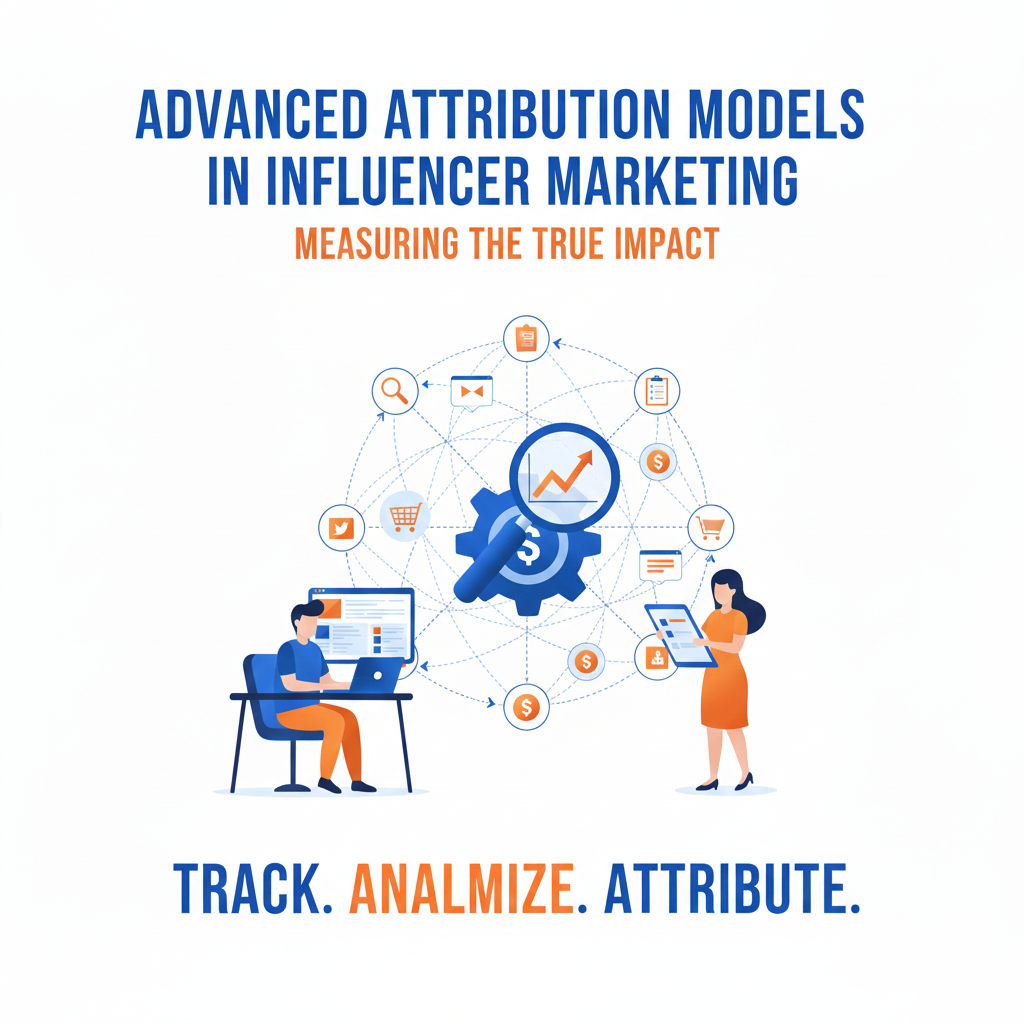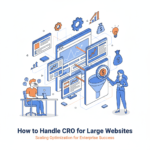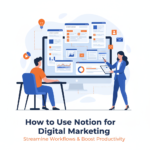
Advanced Attribution Models in Influencer Marketing
Table of Contents
Introduction to Influencer Attribution
Why Attribution Matters in Influencer Marketing
Challenges in Attribution
Overview of Basic vs Advanced Attribution
Advanced Attribution Models
First-Touch Attribution
Last-Touch Attribution
Multi-Touch Attribution (MTA)
Time-Decay Attribution
U-Shaped / Position-Based Attribution
Algorithmic / Data-Driven Attribution
Influencer-Specific Hybrid Models
Tools & Platforms for Attribution
Offline + Online Attribution Integration
Attribution for Different Campaign Goals
Data Sources and Tracking Methods
Privacy and Compliance Considerations
How to Choose the Right Attribution Model
Real-World Examples
Future of Attribution in Influencer Marketing
Final Thoughts
1. Introduction to Influencer Attribution
Influencer marketing drives brand awareness, engagement, and conversions—but measuring which influencers contribute to which outcomes is complex. Attribution modeling is the process of identifying which marketing touchpoints (in this case, influencers) are responsible for a conversion and how credit is distributed.
2. Why Attribution Matters in Influencer Marketing
ROI Clarity: Understand which creators drive measurable results.
Budget Optimization: Invest more in high-performing influencers.
Content Intelligence: Know which formats or channels work best.
Strategic Planning: Improve campaign design, timing, and targeting.
3. Challenges in Attribution
Multi-channel Journeys: Users might interact with 3–7 influencers before buying.
Dark Social: DMs and private shares aren’t easily trackable.
Cross-device Conversions: Influencer seen on mobile, purchase on desktop.
Lack of UTM or Discount Code Usage: Many users don’t click directly.
Platform Restrictions: Some platforms limit tracking (e.g., TikTok, Instagram).
4. Basic vs Advanced Attribution
| Type | Description | Accuracy | Use Case |
|---|---|---|---|
| Basic | First/Last touch, discount code | Low | Small campaigns, quick tests |
| Advanced | Multi-touch, weighted, algorithmic | High | Scaled campaigns, DTC, eCommerce |
5. Advanced Attribution Models
1. First-Touch Attribution
Credit goes to the first influencer touchpoint.
Best for measuring discovery and top-of-funnel influence.
Limitation: Doesn’t reflect the full buyer journey.
2. Last-Touch Attribution
Full credit to the last influencer before conversion.
Useful for understanding what closes the sale.
Limitation: Ignores early-stage influencers.
3. Multi-Touch Attribution (MTA)
Distributes credit across multiple influencers/touchpoints in the user journey.
Subtypes:
Linear: Equal credit to all.
Time Decay: More credit to recent interactions.
Position-Based (U-Shaped): Most credit to first and last influencers.
4. Time-Decay Attribution
Weighs influencers based on how recent their impact was before conversion.
Example:
Influencer A (20 days ago) = 10% credit
Influencer B (2 days ago) = 50% credit
Best For: Fast-moving products or short purchase cycles.
5. U-Shaped / Position-Based Attribution
40% credit to first influencer, 40% to last influencer, and 20% spread among others.
Why it works:
Balances the value of initial discovery with final conversion influence.
6. Algorithmic / Data-Driven Attribution
Uses AI/ML to assign weights dynamically based on user behavior and conversion patterns.
Pros:
Extremely accurate over time
Can adjust for campaign types and product categories
Tools: Rockerbox, Measured, Google Attribution (with GA4), Segment + custom modeling
7. Influencer-Specific Hybrid Models
Custom rules based on influencer category:
Top-tier influencer: High first-touch value
Micro-influencer: More likely last-touch or purchase driver
Ambassador programs: Multi-touch logic
6. Tools & Platforms for Attribution
| Tool | Feature Highlight |
|---|---|
| Rockerbox | Unified multi-touch modeling across influencers and media |
| Triple Whale | Great for DTC brands and eCommerce |
| Shopify Collabs | Native influencer tracking + discount codes |
| Measured | Marketing mix modeling with influencer data |
| Google Analytics 4 (GA4) | Multi-touch modeling with custom attribution |
| Influencity / Grin | Influencer tracking with CRM capabilities |
| Bitly + UTM | URL-based tracking for campaigns |
7. Offline + Online Attribution Integration
Many influencer campaigns drive offline behavior (store visits, in-person events). Combine data sources:
QR Codes or Vanity URLs: Direct users to trackable offline offers.
POS Integration: Sync influencer discount codes at checkout.
Customer Surveys: “How did you hear about us?”
Coupon Redemptions: Link to creator codes in physical purchases.
8. Attribution for Different Campaign Goals
| Goal | Suggested Attribution |
|---|---|
| Brand Awareness | First-touch, view-through |
| Lead Generation | Multi-touch (weighted) |
| Sales/Revenue | Last-touch, data-driven, discount codes |
| App Installs | Last-click, mobile MMPs (e.g., AppsFlyer, Adjust) |
9. Data Sources and Tracking Methods
UTM Parameters: Identify traffic source, influencer name, campaign.
Affiliate Links: Commission-based tracking.
Pixel-Based Tracking: Facebook Pixel, TikTok Pixel, etc.
Cookies and Session IDs: To identify returning users.
Post-Purchase Surveys: Capture direct feedback.
10. Privacy and Compliance Considerations
GDPR / CCPA Compliance: Ensure transparent user data policies.
Consent-Based Tracking: Required for retargeting and cookies.
Zero-Party Data Collection: Collect voluntarily via opt-ins or surveys.
11. How to Choose the Right Attribution Model
Ask:
Is the goal awareness, conversion, or retention?
How long is the buying journey?
How many influencers are involved?
Can you track all the touchpoints reliably?
Are you using a DTC platform like Shopify or an app ecosystem?
Tip: Start with simpler models (U-Shaped or Time Decay), and upgrade to algorithmic once you gather enough data.
12. Real-World Examples
Case Study 1: DTC Skincare Brand
Used a U-Shaped model to attribute discovery to a TikTok macro-influencer and conversion to a micro-influencer.
Increased ROI by 27% by reallocating spend to mid-funnel influencers.
Case Study 2: Fitness App
Integrated first-touch and time-decay attribution using GA4 + AppsFlyer.
Identified that podcast influencers drove 2x longer retention.
13. The Future of Attribution in Influencer Marketing
AI-Powered Attribution: Predictive modeling and dynamic influencer scoring.
Creator Affiliate Networks: Unified tracking across creators and platforms.
Cross-Platform ID Graphs: Linking Instagram > YouTube > site visits > purchase.
Blockchain-Based Tracking: Transparent, tamper-proof attribution logs.
14. Final Thoughts
Attribution in influencer marketing is evolving rapidly. The brands that win will:
Embrace advanced, multi-touch attribution frameworks.
Use data-driven tools, not guesswork.
Customize models to their product journey and influencer mix.
Align attribution models with business outcomes—not just clicks.
Author



